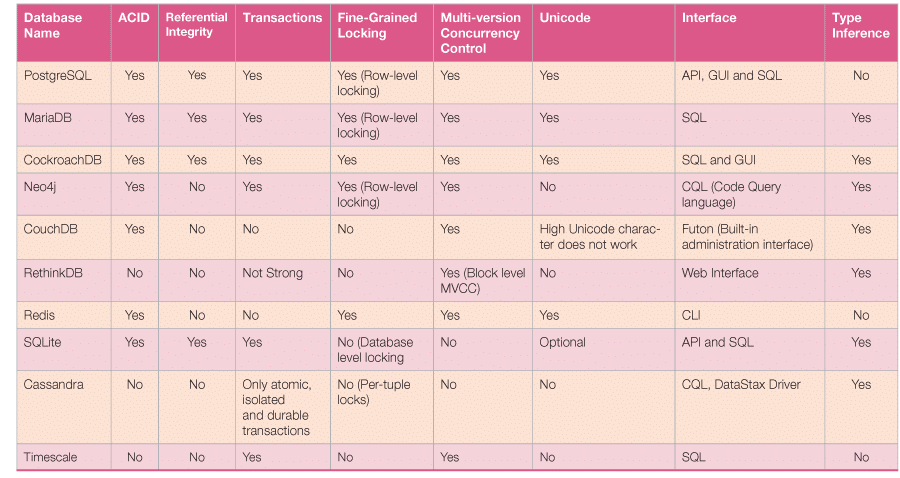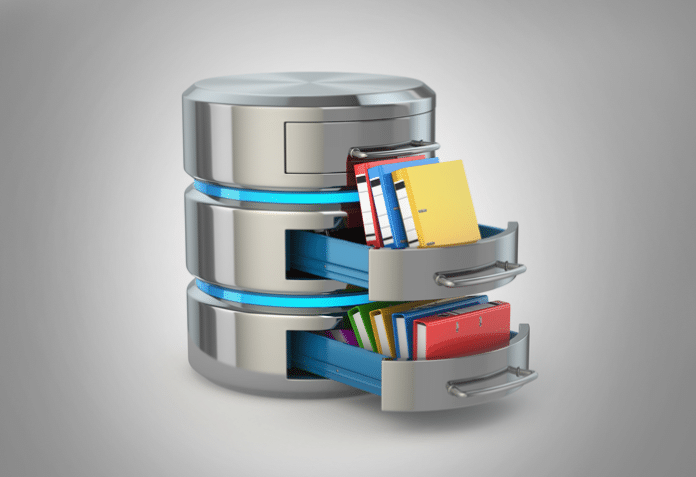A humongous amount of data is being generated across the globe each day, thanks to technologies like the Internet of Things and artificial intelligence. This article briefly introduces some of the best open source tools that can help to manage this data
Traditionally, databases have been managed by proprietary tools offered by Oracle, IBM, Microsoft, and various other smaller organisations. Lately, however, and particularly for new ventures, open source databases have become significantly popular.
Latest trends related to database management
In 2020, database management went through a number of advancements, and most individuals made use of social databases or information distribution centres. The latter coordinate value-based and operational information, and give important business intelligence (BI) through reports and analytics.
To meet the objectives of database management, organisations need to:
- Optimise data warehouses
- Leverage cloud (distributed) computing
- Include graph databases
- Consider multidimensional database management systems (MDBMS)
- Provide AI frameworks
- Augment data management
Multiple databases
Practically everyone is running multiple databases, and multiple open source databases at that. When it comes to using different data storage technologies to handle different needs, a majority are using both relational and other databases, while a smaller share of users is running non-relational databases. Today, many non-relational databases (or data management platforms, if we want to include solutions like Hadoop, for example) support SQL.
Open source databases in the cloud
If you are using cloud management software or a cloud broker service, it’s imperative to have the option to store your information in the kind of database you require.
Some of the best cloud databases are:
- Amazon relational database
- Microsoft Azure SQL database
- Oracle database
- IBM Db2 on cloud
- Google Cloud SQL
Figure 1 lists the best free and open source database management systems and their type.
| S. No. | Database Name | Type |
| 1 | PostgreSQL | Object-Relational Database Management System |
| 2 | MariaDB | Relational Database Management System |
| 3 | CockroachDB | Relational Database Management System |
| 4 | Neo4j | Graph Database Management System |
| 5 | CoughDB | NoSQL Database Management System |
| 6 | RethinkDB | Distributed Document-oriented Database Management |
| 7 | Redis | NoSQL Database Management System |
| 8 | SQLite | Relational Database Management System |
| 9 | Cassandra | NoSQL Database Management System |
| 10 | Timescale | NoSQL Database Management System |
Figure 1: Top 10 free and open source database and their type
Top 10 open source databases
1 PostgreSQL
PostgreSQL is an object-relational database management system, founded on July 8, 1996. Developed by the PostgreSQL Global Development Group, it is written in C and works in most UNIX-like operating systems and Windows.
Features
a. PostgreSQL works with every significant language and middleware.
b. It bolsters simultaneous control.
c. Its server-side programming usefulness is extremely full-grown.
d. It has support for JSON licences.
2 MariaDB
MariaDB is a network created relational database management software system, written in C, C++, Bash and Perl. The stable version 10.3.12 of this free and open source database management software has the date January 7, 2019. MariaDB Corporation AB and MariaDB Foundation are the developers of this database.
Features
a. MariaDB is comparable to MySQL, with some additional features. It can be viewed as an evolved variant of MySQL.
b. Programming in MariaDB is covered by BSD, GPL, and LGPL licences.
c. The framework uses a rearranged and standard questioning language.
d. It supports an assortment of working frameworks and programming dialects.
e. It offers special help for PHP.
3 CockroachDB
CockroachDB is a distributed SQL (newSQL) database built on a transactional and strongly-consistent key-value store. It’s heavily inspired by Google’s Spanner and has many similarities with it.
Features
a. Distributed or replicated OLTP
b. Multi-data centre deployments
c. Multi-region deployments
d. Cloud migrations
e. Cloud-native infrastructure initiatives
4 Neo4j
Neo4j is a graph database management system. Its stable version 3.5.1 was released on December 20, 2018.
Features
a. It is ACID (atomicity, consistency, isolation, and durability) compliant.
b. It encourages versatility.
c. Replicates information with quality and security.
d. It works with Web applications for recovering chart information.
e. It bolsters enquiry information sent out to JSON and XLS design.
5 CouchDB
CouchDB has been developed by the Apache Software Foundation, and is written in Erlang language. The stable version 2.3.0 was released on December 6, 2018.
Features
a. It is ACID compliant.
b. Has a distributed design with replication.
c. CouchDB gives accessibility such as parcel resilience, ensuring competency.
d. The information in the CouchDB framework is stored as ‘records’.
6 RethinkDB
RethinkDB is an open source database that, in contrast to customary database frameworks, stores data in the JSON (JavaScript Object Notation) group. It’s viewed as a NoSQL (Not only SQL) database, just like MongoDB, Cassandra, and CouchDB.
Features
a. No mapping or table structure is required for putting away the data.
b. Distributed engineering helps it to scale (in groups).
c. It has:
- Consistency (similar information can be viewed by all the customers of the framework)
- Availability
- Partition tolerance
7 Redis
Redis is an open source (BSD authorised), in-memory information structure store, used as a database, reserve and message dealer. It enhances information structures — for example, strings, hashes, records, sets, arranged sets with extend enquiries, bitmaps, hyperlogs, and geospatial files.
Features
a. In-memory data store
b. Flexible data structures
c. Simplicity and ease-of-use
d. Replication and persistence
e. High availability and scalability
8 SQLite
SQLite is a C programming library. The word ‘lite’ in the name indicates that the organisation, arrangement, and basic source of the database is lightweight. Created by D. Richard Hipp on August 17, 2000, the stable version of SQLite 3.26.0 was released on December 1, 2018.
Features
a. SQLite programming enhances cross-stage document design.
b. It needs less programming. The whole library is under 500 KiB in size.
c. It has a static composing group, which is usable in most SQL database motors.
d. SQLite utilises variable-length records.
e. The SQL explanations are compiled into virtual machine code.
9 Cassandra
Cassandra comes from the stable of the Apache Software Foundation, and is a free and open source DBMS written in Java. Authorised under Apache License 2.0, its stable version 3.11.3 was released on August 1, 2018.
Features
a. Apache Cassandra is a NoSQL database.
b. It supports replication and multi-server farm replication.
c. It is adaptable and reliable.
d. A distributed database, its conveyance plan relies on Amazon DynamoDB and information model on Google Cloud Bigtable.
e. Cassandra can run on sensitive equipment and perform quick writes to store a lot of information.
10 Timescale
New technologies require new sorts of databases. One of the best open source databases for the Internet of Things is Timescale.
Features
a. Hypertable abstraction layer
b. Automatic partitioning
c. Optimised time based constraint exclusion
d. Works across time-series and relational tables
e. Built-in flexible time bucketing

Figure 2 gives a comparison between different free and open source database management software.
Figure 2: Comparison between different free and open source databasesAll the database management solutions mentioned here have their strengths and weaknesses. We need to choose the solution that best suits our requirements. With unimaginable amounts of information being generated each day, software solutions that help to manage this data are becoming invaluable.




